
Not to be outdone by the Great Canadian House Hippo, the Tundra Flamingo of Nunavut is a rare breed of bird. Roughly the size of a large goose with much longer legs, the Tundra Flamingo sports and mottled brown color to its feathers that fade to a slate grey head. A prominent red patch on its face hides its stoner-like eyes, Which alternate between wide-eyed and paranoid to a sedate half-closed sleepy look. Commonly found hanging out near the dumps of communities in Nunavut these birds have caused locals to loan the affectionate "Bin Chicken" moniker to describe these these creatures.
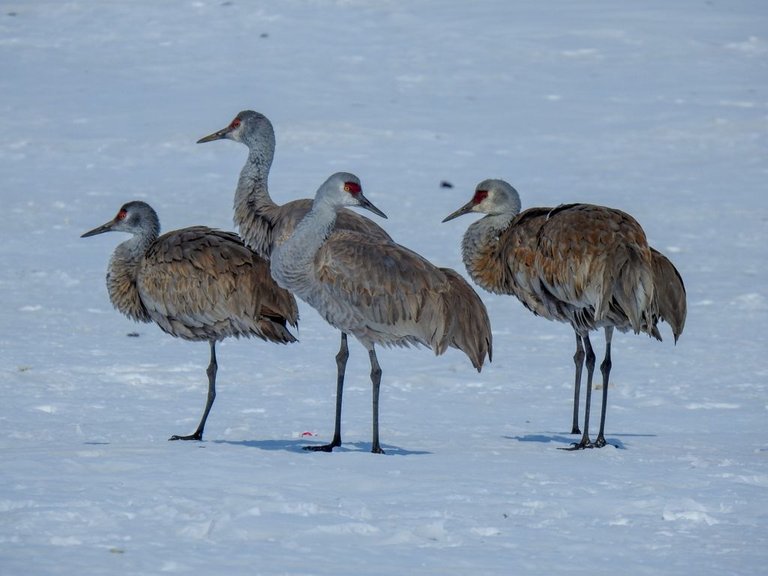
Or maybe I'm telling a little bit of truth to hide a lie. Because these beautiful creatures are not Flamingos, nor are they stoners or scavengers. Although, one could describe them as "Happy, Hungry, Sleepy."
I present to you a small flock of Sandhill Cranes!
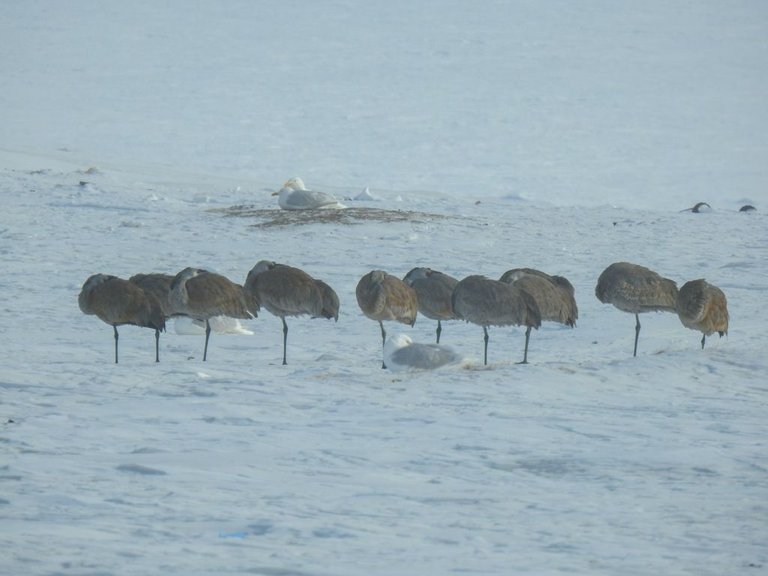
OH COME ON! I'm trying to prove you're not flamingo's birds! Work with me here!
Of course, I kid. The Sandhill Cranes appear to have arrived a tad bit early to our latitude, with several feet of snow between them and food. They are sleeping and standing on one foot so that they can warm the other one up a bit, I assume. If I remember correctly, Flamingos do the same thing, but for the opposite reason; Their tidal pools that they feed in are so hot that they stand on one foot to keep the other one cool.
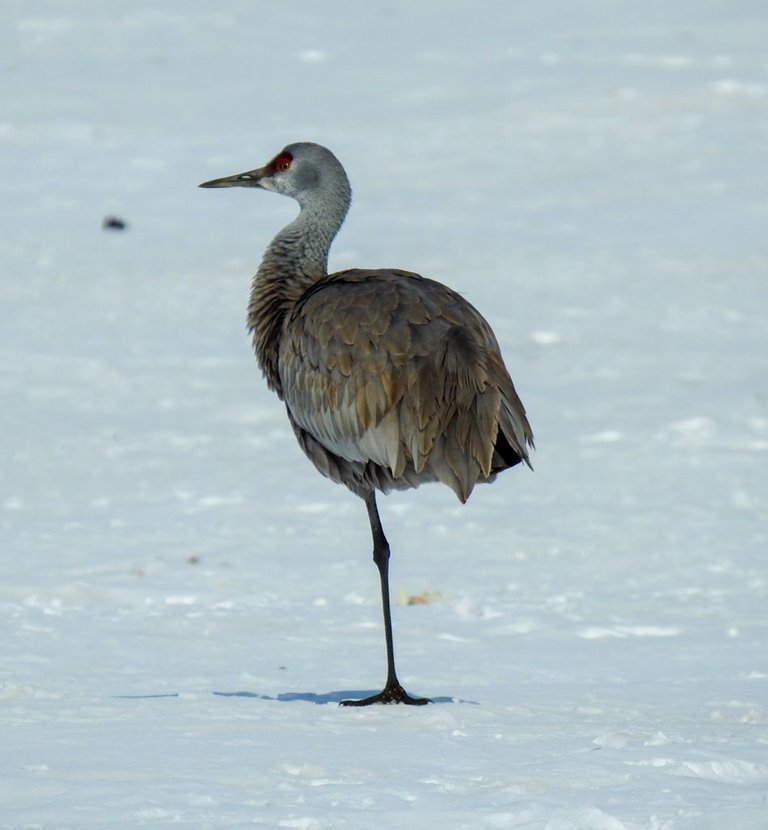
Darn it! We're still on Flamingos! AND YOU'RE NOT HELPING, SANDY!
Sandhill Cranes have two words in Inuktitut, Tatiggaq and Tatiggarjuaq. Their range in Nunavut extends as far north as Devon Island, but are much more common south of 74ºN. Sandhill Cranes commonly nest in low, wet marshes or meadows near tundra ponds which is the same habitat in which they feed. The Cranes are omnivores who focus mostly on insects, mollusks, small birds and mammals, but they will also feed on seeds, berries, and roots. Further south, Sandhill Cranes will also take advantage of small lizards and amphibians.
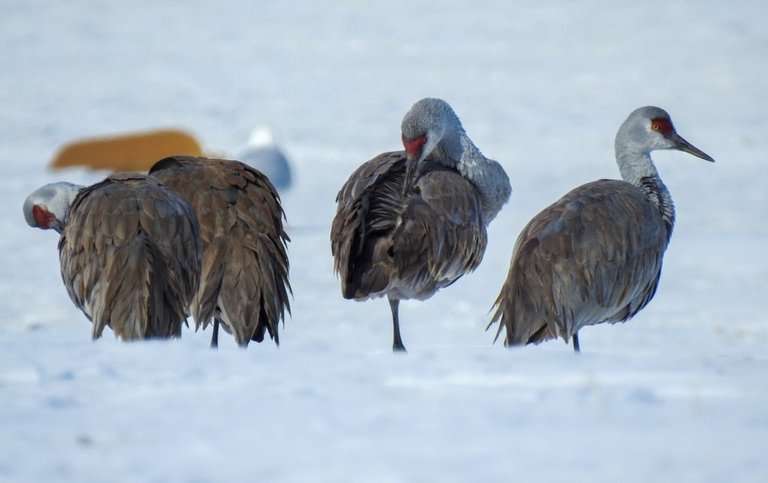
If you already know Sandhill Cranes then I can make a reasonable assumption that you know them for two reasons. Their distinctive bugle-like call as they are flying overhead, so high you can't even see them. Or it will be their elaborate courting ritual dance. Where you will spot Sandhill Cranes in marshes and agricultural land spreading their wings and jumping in the air repeatedly.
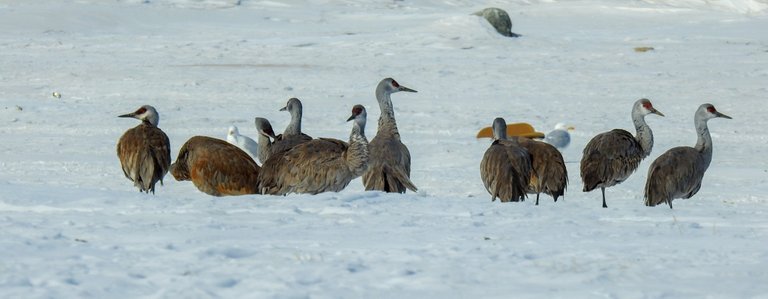
Sandhill Cranes gather vegetation for nesting material from their surrounding locations, creating a mound with a central depression for the eggs. The female will only lay 1 to 2 light green to pale brown eggs that are speckled in light brown splotches. Both parents take a part in incubating the eggs and rearing the young Cranes.
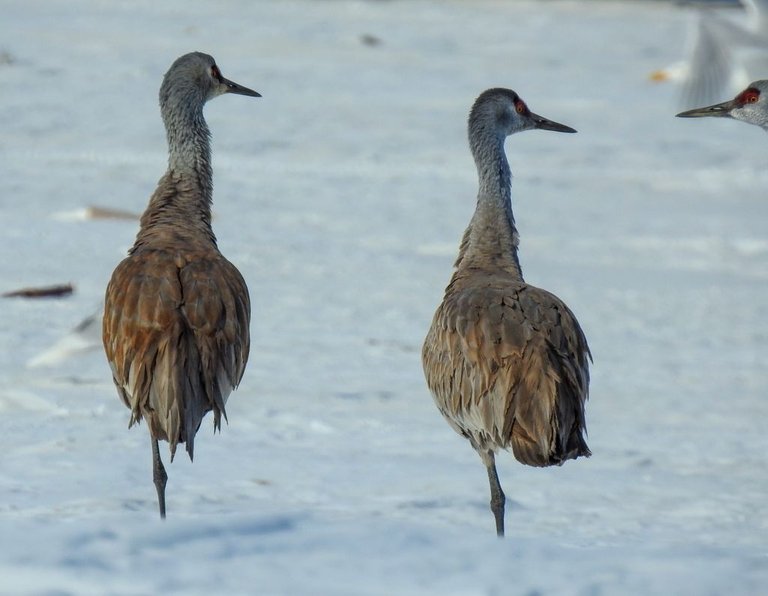
The Tundra Flamingo - Er... Sandhill Crane is the tallest bird in the entire 2.2 million kilometers squared land called Nunavut, standing upwards of 100 centimeters. They also have a massive wingspan that is well over 2 meters in length. That's over 6 feet for all you Freedom Unit users out there! The rusty brown coloring in the Cranes feathers is mostly staining, with the actual colors being slate grey just like the neck and head of the bird.
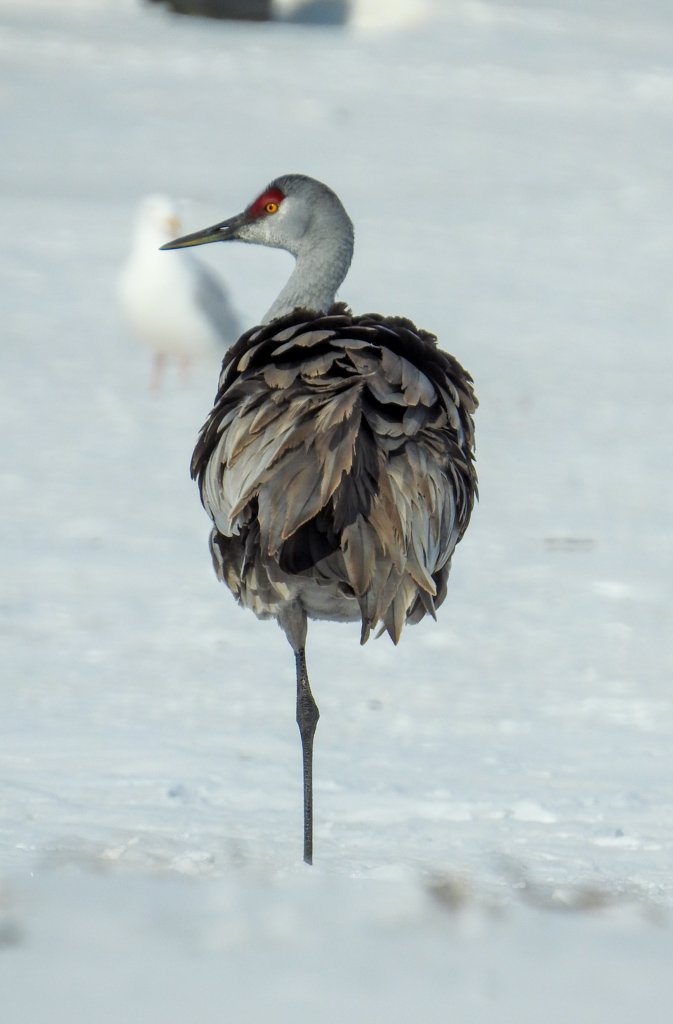
Attempts to count the numbers of Sandhill Cranes in Nunavut are difficult due to the demand on researchers, and the size of the territory. Estimates of the total North American population range from 500,000 individuals up to 750,000. The Sandhill Crane sits at the Low Concern level on conservation charts, unlike its majestic counterpart, the great Whooping Crane.
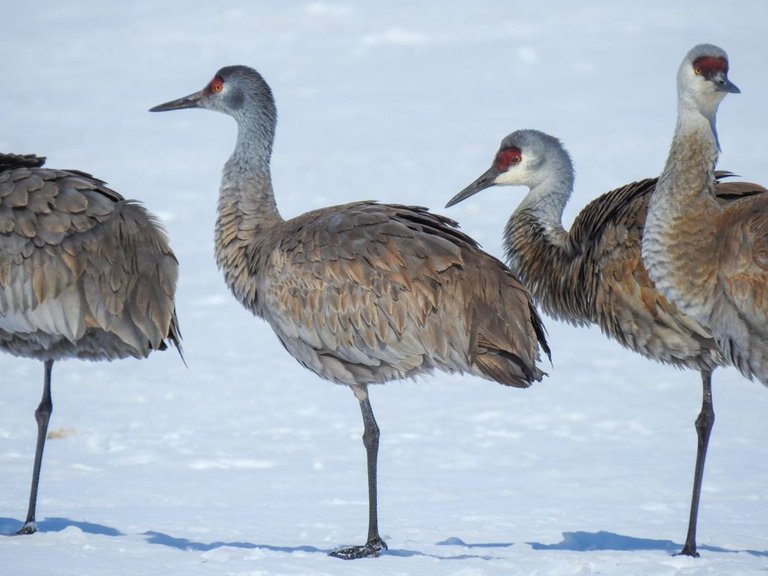
Find my artwork for sale exclusively on NFTShowroom.com
Find my photographs of Nunavut scenery and Wildlife on Lensy.io
Follow me on twitter here: Hive Related Account / Photography and Art Account
I am also on Instagram: But only Photography and Art

Down here they are already sitting on their nests. I bet some of the babies have hatched already out in the prairie grass.
We get those flamingos here, too, but they don't bring their own snow when they pass through.
Congratulations @lacking! Your post has been a top performer on the Hive blockchain and you have been rewarded with the following badge:
You can view your badges on your board and compare yourself to others in the Ranking
If you no longer want to receive notifications, reply to this comment with the word
STOPCheck out the last post from @hivebuzz:
👍
Excellent post with information and great pics!
We appreciate your work and your post was manually curated by @nelinoeva from the DNA team!
Reach us on Discord to learn more about the project!
Hello @lacking!